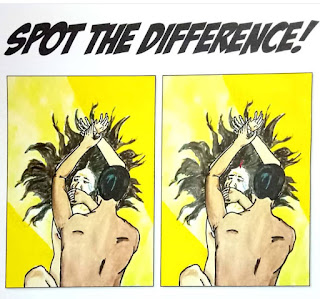Free Consent- Coercion
In the previous article, the causes of consent not being free were introduced. In this article, one of those causes, coercion, would be dealt with in detail.
Definition
Coercion literally translates to the use of force to make a person do something which he does not intend to do or make him/her abstain from doing something which he intends to do.
Coercion is
defined under section 15 of the Indian Contract Act,1872 as
“ ‘Coercion’
is the committing, or threatening to commit, any act forbidden by the Indian
Penal Code (XLV of 1860), or the unlawful detaining, or threatening to detain,
any property, to the prejudice of any person whatever, with the intention of
causing any person to enter into an agreement.
Explanation.
— It is immaterial whether the Indian Penal Code (XLV of 1860), is or is not in
force in the place where the coercion is employed.”
The elements of coercion can be explained through the following chart:-
The first element i.e. intention is the most important for any act to be construed as coercion. A person should be committing or threatening to commit the acts specified in the section with the intention to cause another person to enter into an agreement to create an impression of coercion. There are two specific actions mentioned in the definition which would constitute as coercion. They are: -
1.
Any act forbidden by
the Indian Penal Code-
Section 15 states that if a person does any act which is forbidden by the
Indian Penal Code or threatens to do so, in order to cause another person to enter
an agreement, he commits coercion. It is not necessary that such coercion
proceed from a party to the contract or is directed immediately against a
person who is intended to enter into a contract.
For example,
Penny threatens Sheldon to kill him if he does not transfer his property to
Leonard. Thus, Penny threatens to commit murder which is a crime under section
300 of the Indian Penal Code.
Another example
would be, Kaleen Bhaiyya, a local goon threatens Guddu to kidnap and rape his
minor sister, Dimpy if he does not agree to get her married to Kaleen’s son
Munna. Here Kaleen bhaiyya threatens to commit kidnapping and rape which are
punishable offences under the Indian Penal Code to get Guddu to give consent
for marriage on behalf of Dimpy as her guardian.
It is required
by the phrase “act forbidden by the Indian Penal Code” for the court to
adjudge in a civil suit whether the contended act of coercion is such to amount
as an offence. In a case of Chikkam Amiraju v. Chikkam Seshamma, an
issue arose that whether a property release executed by a wife and son as a
result of a threat of suicide by the husband is to be understood as an effect
of coercion or not? It was held by the court by a majority that the threat of
suicide amounts to coercion and thus the release deed is voidable. The issue
arose on the difference of opinion of whether suicide is an offence under the
IPC or not? The majority opined that suicide is an offence. It is not
punishable because once it is committed there is no one left to punish but that
does not mean that it is not forbidden. The definition of coercion specified
that it includes acts forbidden by the IPC. Therefore, a threat to
suicide will amount to coercion according to the definition laid down in
Section 15. Judge Oldfield dissented on the ground that unless an act is not
punishable it is not forbidden.
A meagre threat
of bringing criminal charges against someone does not amount to coercion as it
is not by itself forbidden by the IPC. However, threatening to bring a false
charge is coercion (Askari Mirza v. Bibi Jai Kishori). For example, Kashish
threatens her boss to bring a fake sexual harassment case against him if he
does not give her a promotion. This will amount to coercion and the promotion
will thus be voidable.
2.
Unlawful detention of
property
An illustration
of unlawful detention as coercion can be seen in an early case, Astley v.
Reynolds. In this case the plaintiff plighted a plate to the defendant for
£20. After three years, when the plaintiff came to redeem his plate, the
defendant refused and demanded an interest of £10. The plaintiff was in urgent
need of the plate and thus paid the interest to redeem it. He then filed a case
in court for recovery of the extra amount paid. The court allowed the action
for recovery. It was held that the plaintiff was in immediate need to his plate
and the defendant extracted an extra amount of money from him by refusing to
return it.
Another example
is when Fizer, a multinational company, fires an employee named Rajesh. Rajesh
gets hold of some confidential information and he threatens to release it to
the public if the company doesn’t hire him back. The company hires him back.
Such appointment is voidable later on at the option of the company because it
was made due to coercion. (Muthiah Chetti v. Karuppan Chettiar)
Effect of
coercion on the agreement
If consent to an
agreement is given due to coercion, it does not make the agreement void ab
initio (void since the very beginning) but it makes the agreement voidable at
the option of the party whose consent is not free. This rule is provided under section
19 of the Indian Contract Act, 1872. The relevant portion of the section is
as follows,
“When consent
to an agreement is caused by coercion, fraud or misrepresentation, the
agreement is a contract voidable at the option of the party whose consent was
so caused.”
Therefore, the
agreement can be declared void or it can be continued as it is at the option of
the party whose consent is affected by coercion.
For example,
Dimpy was married to Munna, the consent to which was given due to coercion.
Dimpy can now choose to continue the marriage or declare the marriage as
without consent therefore voidable.
BY
LAWVASTUTAH
REFERENCES:
1. Indian Contract Act, 1872
2.
Pollock & Mulla, The Indian Contract and
Specific Relief Acts, 16th edition.
3.
Avtar Singh, Contract and Specific Relief, 12th
edition.
4.
Halsbury’s Laws of
India Contract, 2e 2015.
5. Chikkam Ammiraju v. Chikkam Seshamma, AIR 1918 Mad 414, (1918) ILR
41 Mad 33, 34 IC 578 (SB).
6. Askari Mirza v. Bibi Jai Kishori, (1912) 16 IC 344.
7. Astley v. Reynolds, (1731) 2 STR 915: 93 ER 939.
8. Muthiah Chetti v. Karuppan Chettiar, (1927) 50 Mad 786, 105 IC 5,
AIR 1927 Mad 852.



Comments
Post a Comment